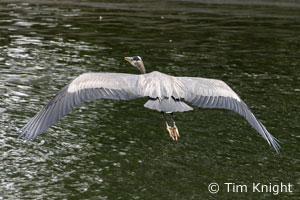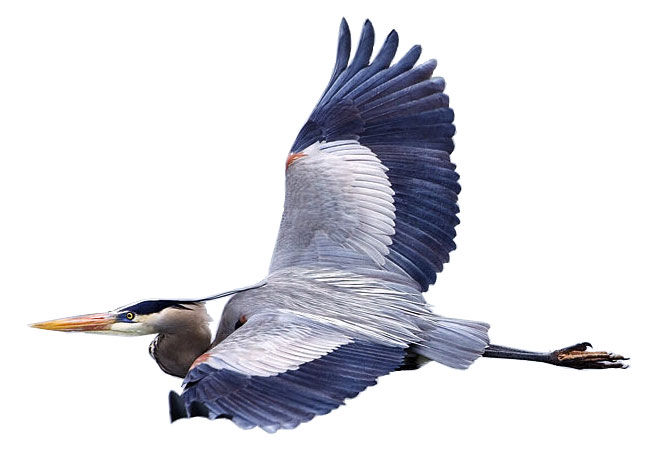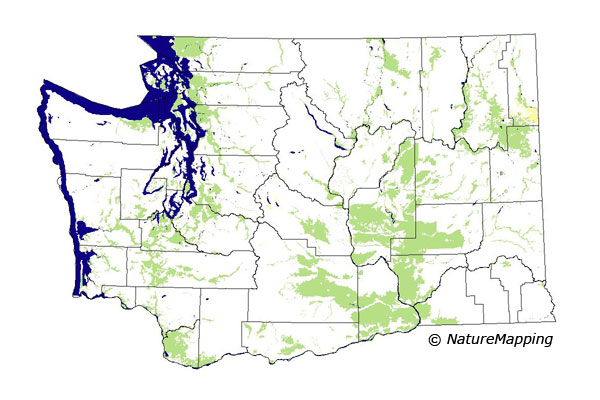
NatureMapping Animal Facts for Kids
Great Blue Heron
|
Great Blue Heron (Ardea herodias)
Where they live: 
What they eat: Great Blue Herons feed on fish, amphibians, reptiles, invertebrates, small mammals, and even other birds. In Washington, much of their winter hunting is on land, with voles making up a major portion of their winter diet. (Seattle Audubon Society) Behavior: When foraging, they stand silently along the shore, waiting for prey to come by, then they stab the prey with a quick lunge of the bill. They will also stalk prey slowly and deliberately. Both parents feed the young. The young birds can first fly at about 60 days old, but they continue to return to the nest and are fed by the adults for another few weeks. The adults pair-bond during the nesting season. 
Nesting: Nesting colonies are typically found in mature forests, on islands, or near mudflats. Great blue herons do best when they are free of human disturbance and have foraging areas near by. Great Blue Herons typically breed in colonies containing a few to several hundred pairs. Nest building begins in February when a male chooses a nesting territory and actively displays to attract a female. The large nest is usually built high up in a tree. The male gathers sticks for the female who constructs a platform nest lined with small twigs, bark strips, and conifer needles. The female lays 2-6 pale blue eggs, then both parents incubate them for 25-29 days (4 weeks) until the young hatch. The parents bring food to young at the nest for two months before the young can fly and continue feeding the birds for a few weeks after fledging the nest.
Did you know?

An adult Great Blue Heron near Portage Bay in Seattle. More information: BirdWeb: Great Blue Heron
All About Birds: Great Blue Heron |

